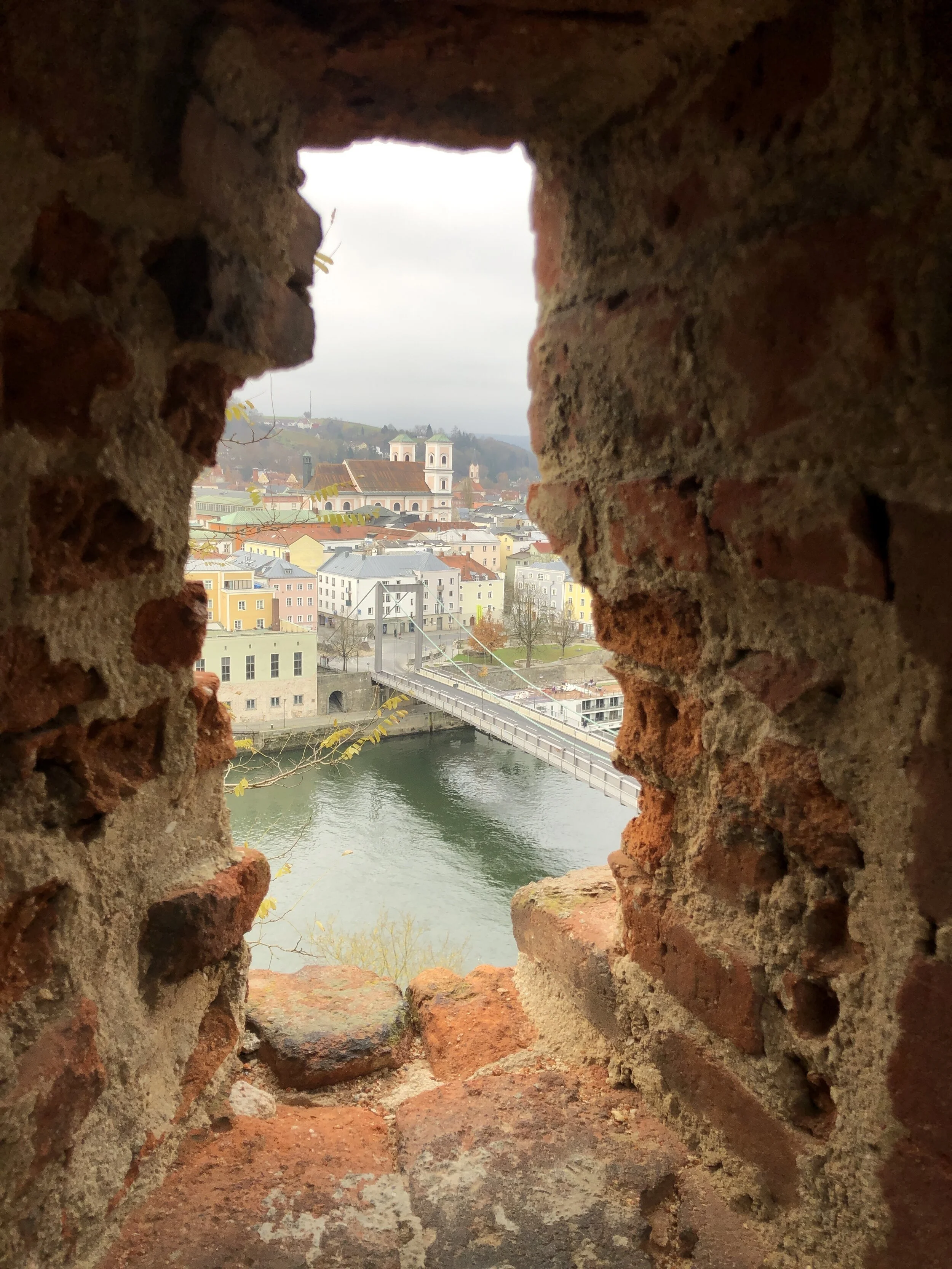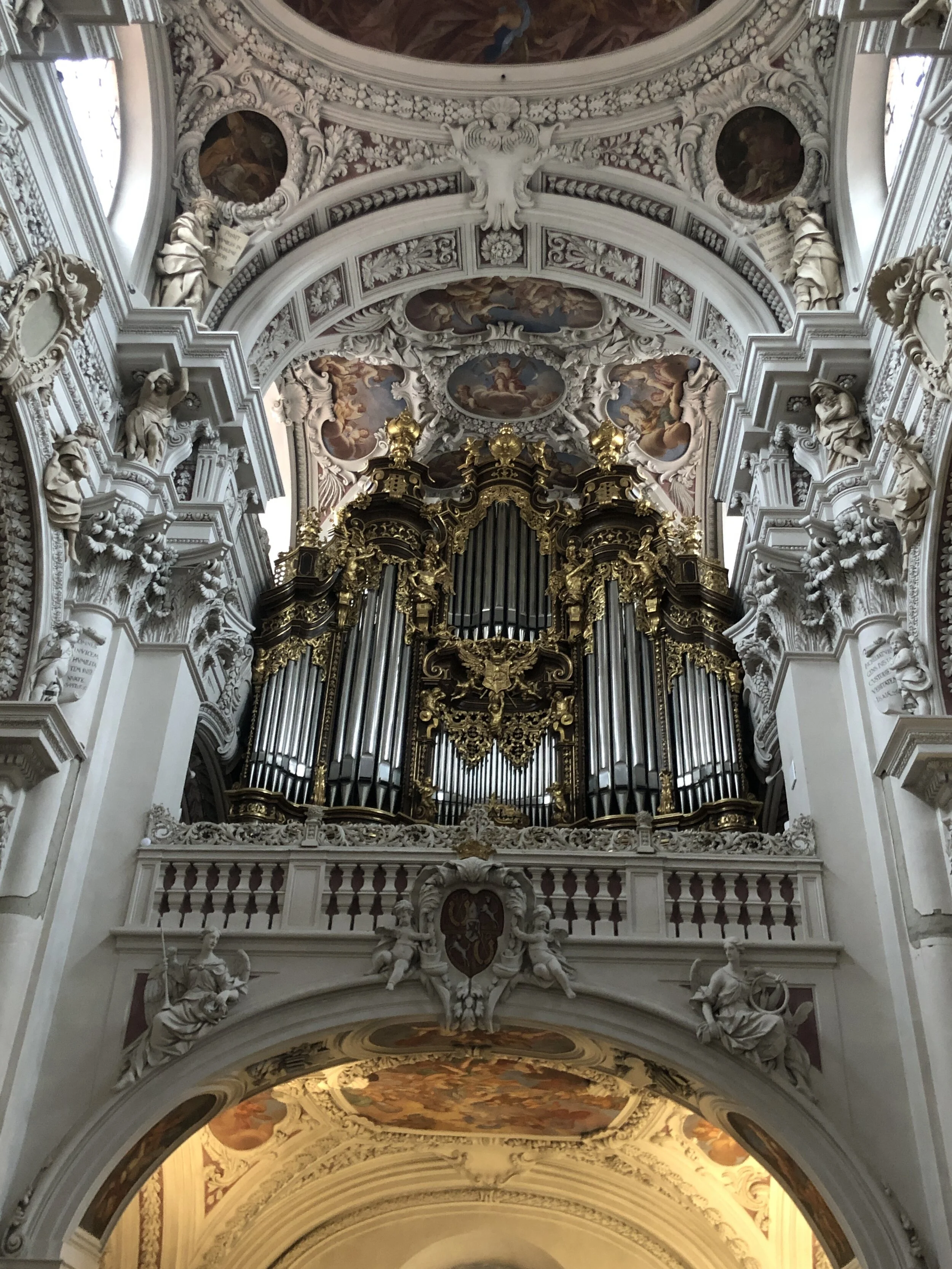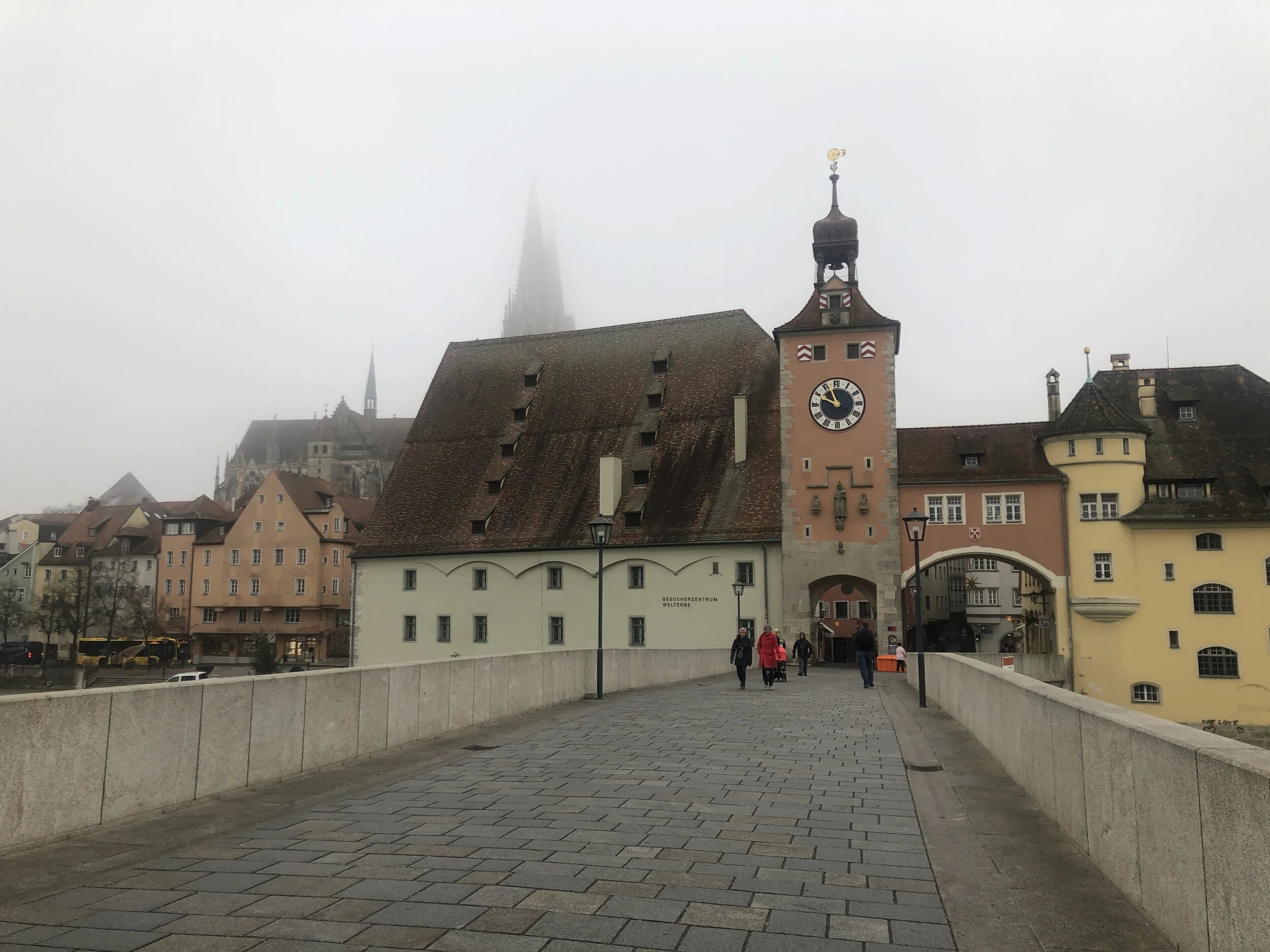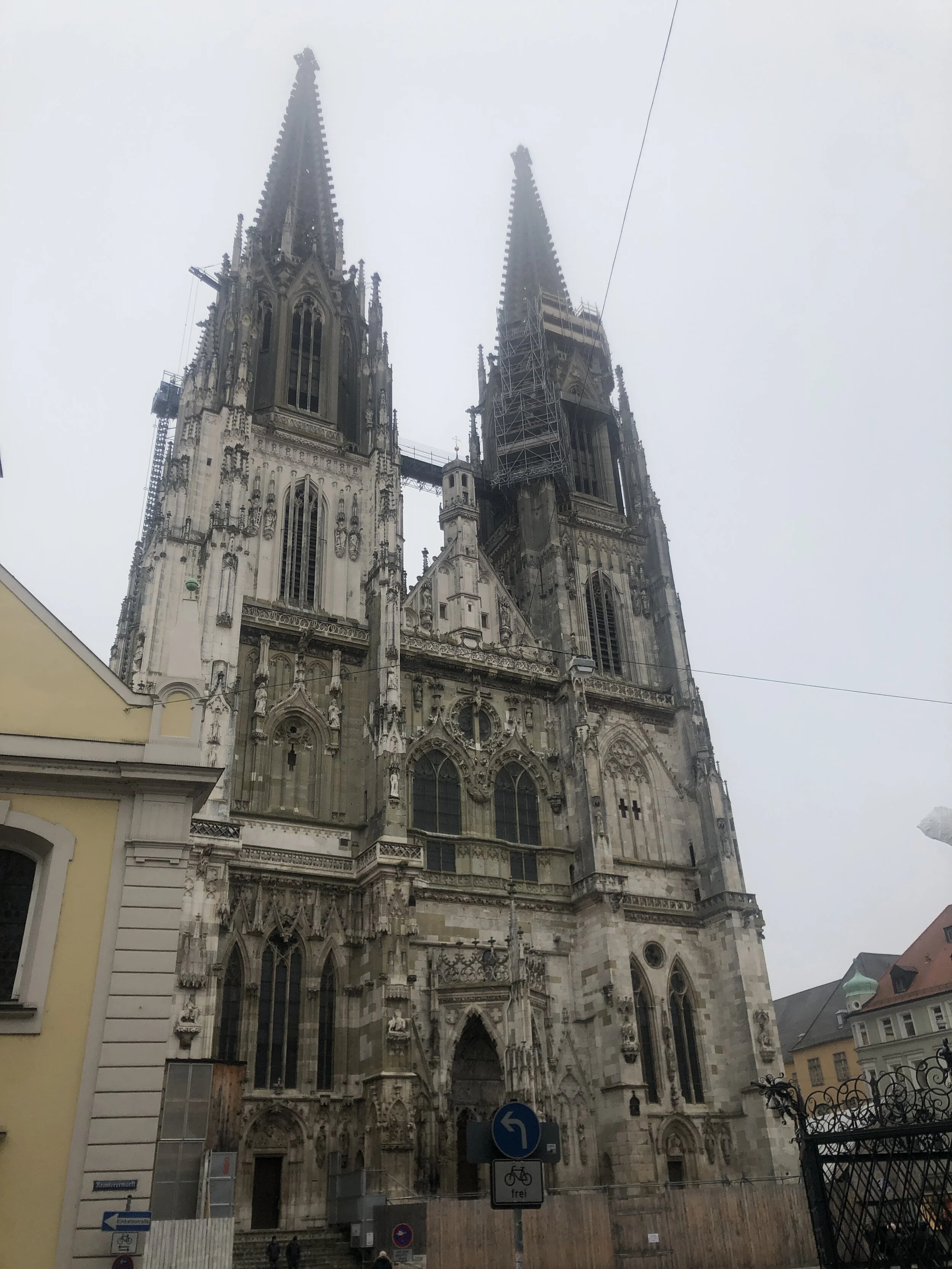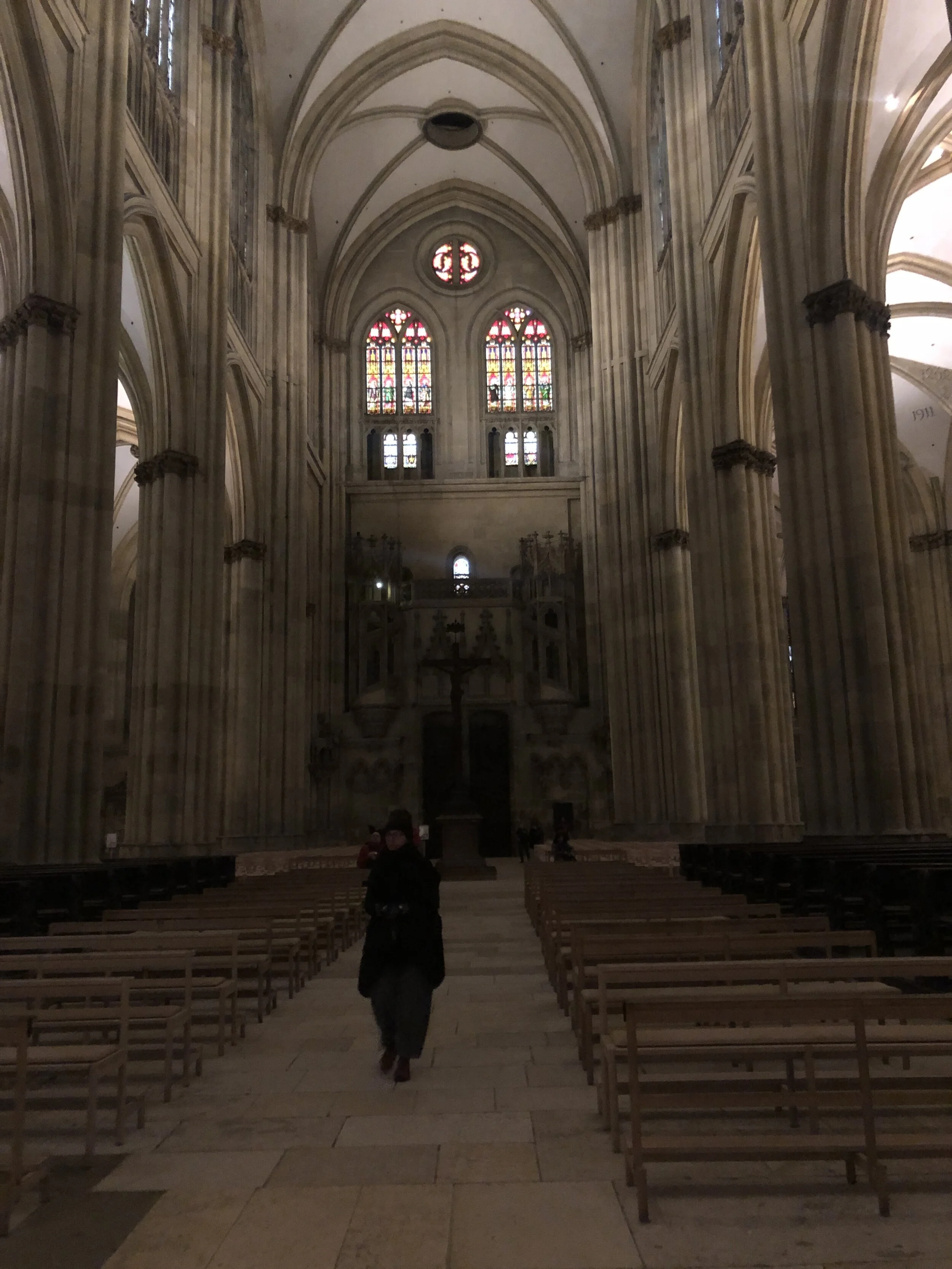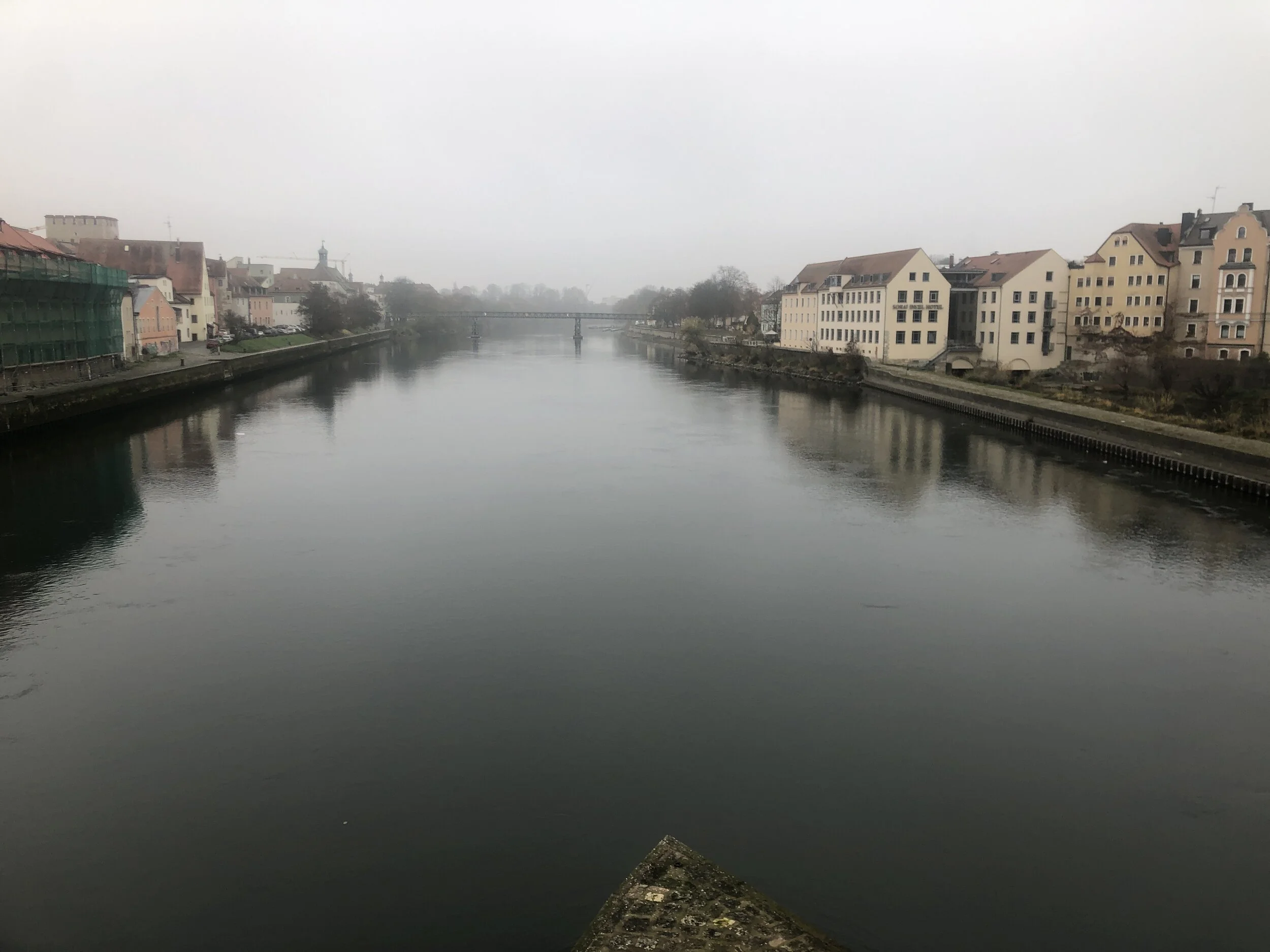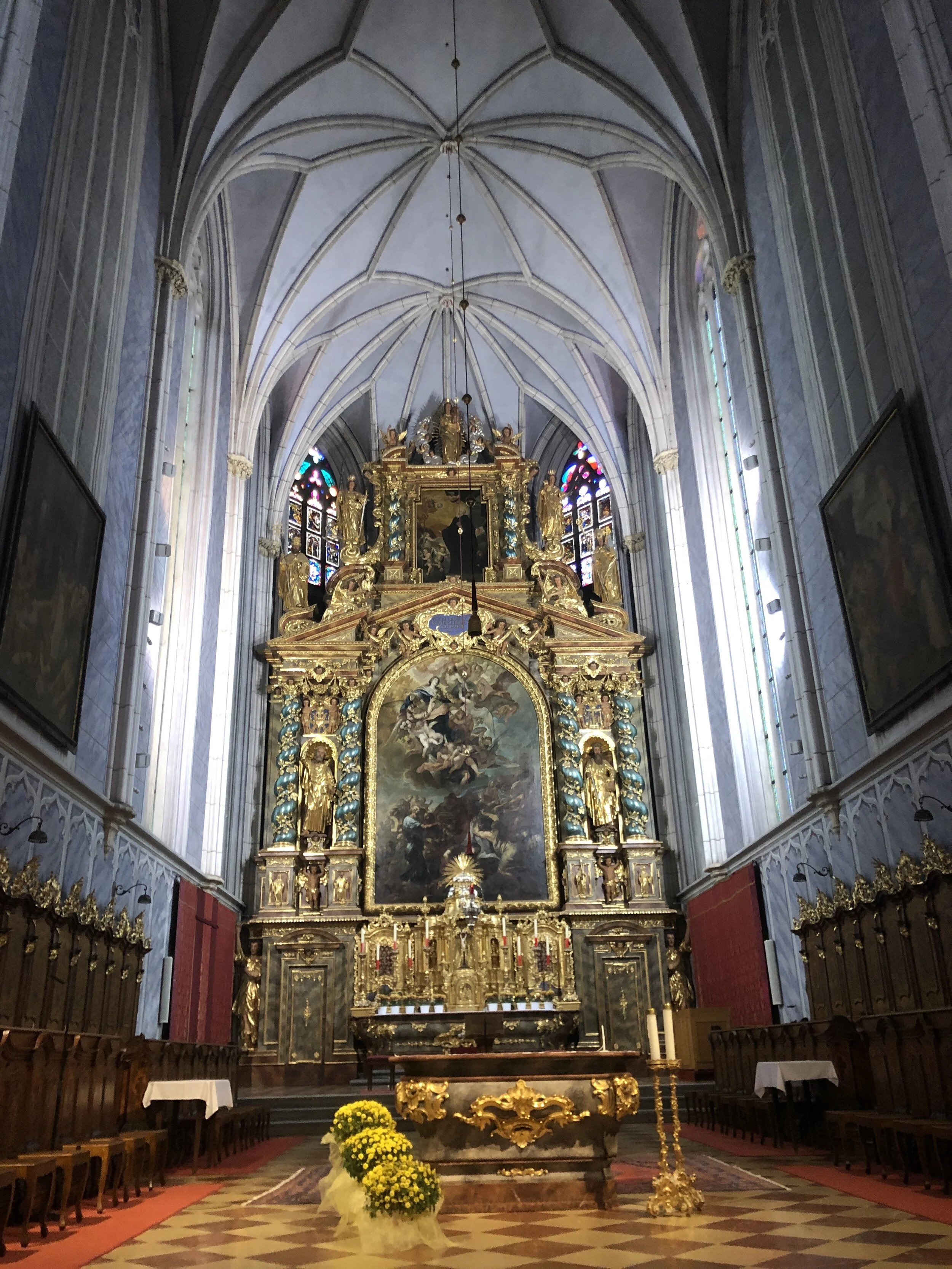A Trip Down the Danube: Passau & Regensburg
History is often most interesting in the
smallest of towns.
Passau and Regensburg are small - by my standard - towns along the Danube River in Germany. We spent a day in each and discovered some “fun facts,” aka my favorite facts of all.
Passau
Passau is a 2,000 year old city in Germany that was first settled by the Boli clan of Celts. They were the first group to make swords out of metal, which of course later spread to the rest of the world. The main St. Stephens Cathedral is located here and all other St. Stephens’ churches (i.e. the one in Vienna and 2 others) relate back to this one. This cathedral is often viewed as Baroque with Gothic bones because it features Gothic, Baroque and Neo-Baroque architecture. If you ever look at a series of Gothic cathedrals you will notice that all of them have bows pointing to the heavens - this is a giveaway for Gothic architecture. The cathedral is most known for its giant organ - it is over 40 tons and has 17,976 organ pipes. If you’ve ever seen a church organ you understand how massive this structure is, but just in case, I’ve attached pictures which might help you envision the scope. Unlike many churches of the time, this one only took 70 years to build. Compare it to the St. Peter cathedral in Regensburg [below] and you’ll see what I mean.
The cathedral is right next to the Bishop’s Palace, which served as Napoleon’s headquarters in Germany. He also used Veste Oberhaus (the castle on the hill) as a border fortress against Austria. Most notable is that Passau was the spot where Napoleon came up with the notion of the separation of church and state.
Fun Fact: Bavaria (southern Germany) is often represented by a lion and white and blue {in that order} colors.
Regensburg was my favorite town because it was almost entirely undamaged during World War II. It’s most recognizable for the ‘Old Stone Bridge’ located on the Danube River. This bridge was finished in 1146 and then used as a basis for the design of future bridges, one of which is in Prague. It has been restored to make it compliant with 21st century safety standards. Although it was once a bridge used by everyone and everything, it has been fully converted to a pedestrian bridge due to past collapse warnings. It has since been restored, but remains a pedestrian bridge. The current the bridge causes is so strong (it creates whirlpools!) and the clearance is quite low for today’s standards, so a Canal was built to accommodate most shipping needs. Today, only small recreational boats go under the bridge. Now back to cathedrals. The St. Peter Cathedral is the other gem of the city. Unlike the St. Stephens Cathedral in Passau, this one took over 600 years to complete and is a master piece of Gothic architecture. Take a look!
Fun Fact: The German’s are incredibly proud of their autobahn system, which closely resembles American highways. The biggest difference is that the autobahn has NO speed limit. Interestingly enough, Hitler was responsible for a lot of the planning and construction of the autobahn because he needed efficient roads for the war.
Fun Fact: The original beer recipe that many German breweries still follow was developed in 1516 and is as follows: water, hops and mold. No additions are added, which should make the beer relatively healthy.
*Disclaimer: All historical information is credited to the two amazing tour guides I had and was not fact-checked beyond what was provided.

